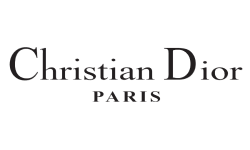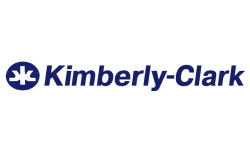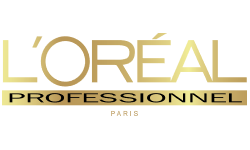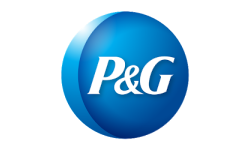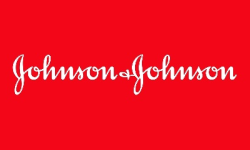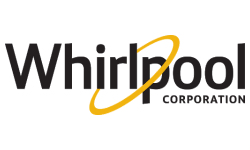
Global Cleanroom Disinfectant Market by Type (Non-Oxidizing Disinfectants, Oxidizing Disinfectants, Hand Sanitizers, Others), By Application (Biotechnology Industry, Pharmaceutical Industry, Hospitals, Medical Devices Manufacturers, Others) and Region (North America, Latin America, Europe, Asia Pacific and Middle East & Africa), Forecast To 2028
The global cleanroom disinfectant market is expected to reach USD 7,907.0 million by 2028 from USD 3,711.5 million in 2016 at a CAGR of 8.1% during the forecast period (2016-2028). Non-oxidizing disinfectants are expected to lead the market with a share of 54.2%. North America is expected to witness a high growth rate with 9.3% CAGR over the forecast period due to increasing demand for non-oxidizing and oxidizing disinfectants in hospitals and the pharmaceutical industry as well as an increase in biotechnology facilities that require accurate sterilization level before research can start which requires non-oxidizing and oxidizing disinfectants respectively.
Cleanroom disinfectants are chemical products applied to clean surfaces of equipment and facilities in order to protect them from possible contamination by harmful microbes. Cleanrooms refer to spaces that have been specifically designed for the production of goods or devices on a large scale, with minimal risk of contamination. They help ensure sterility-critical tasks can be completed without fear of cross-contamination between samples and avoid causing adverse reactions among patients who receive medical treatments. The use of these chemicals is essential not only for maintaining health standards but also because they enable companies (such as pharmaceuticals) to produce high-quality items at an affordable cost while complying with FDA guidelines.
Cleanroom disinfectant is a chemical agent that ensures the environment in which it's used is sterilized. The process of cleaning and disinfecting an area involves three steps: removing all dirt, debris, or other foreign material from the surface; coating surfaces with liquid chemicals to kill any microorganisms residing there, and leaving the treated area for long enough to ensure that the chemical has had time to work.
On the basis of type, cleanroom disinfectant is segmented into non-oxidizing disinfectants, oxidizing disinfectants, and others.
Non-Oxidizing Disinfectants
These are disinfectants that do not release oxygen or ozone and hence cannot kill bacteria through oxidation. They have to rely on physical means such as chemical agents (like sodium hypochlorite), heat, or cold for their action. Nonoxidizing disinfectants can be used in combination with other types of sterilization methods where they would act as a “cleaner” agent. The most common non-oxidizing class is the phenolic compounds which include chlorine dioxide gas, hydrogen peroxide vaporized liquid, and quaternary ammonium salts.
Non-oxidizing cleanroom disinfectant is a type of chemical agent that kills microorganisms without oxygen. Non-oxidizing agents are also called quaternary ammonium compounds, or Quats for short. The most common Quat used in this regard is benzalkonium chloride. They have little to no effect on human cells and tissues because they don't require any air exposure to kill germs effectively.
Oxygenating Disinfectants
Oxidizing disinfectants are a type of chemical that destroys disease-causing microorganisms and their toxins by means of oxygen. It is used to cleanse medical instruments, surfaces, or any other materials for surgical use. Oxidized agents work quickly but also make the surface water-sensitive which can cause corrosion problems if not kept dry; therefore they should be applied in areas where moisture cannot accumulate on the surface treated with oxidant chemicals.
Oxygenating disinfection kills bacteria by releasing free radicals that break down the cell walls of microbes. This type of disinfectant is used for high-level disinfection and sterilization, as the concentration is lethal to all microorganisms on exposure. The most commonly utilized oxidizing agents are hydrogen peroxide vaporized liquid or gas (H202), chlorine dioxide gas (ClO²), and ozone (03) gas.
On the basis of application, the global cleanroom disinfectant market is segmented into the biotechnology industry, pharmaceutical industry, hospitals, and medical devices manufacturers.
Biotechnology Industry
Cleanroom disinfectants are used to control the spread of infectious diseases in areas that have a large concentration of people like biotechnology and pharmaceutical industries. These types of businesses require clean, sanitized environments for manufacturing different products using human as well as animal cells or tissues. The use of these chemicals helps maintain a controlled environment by eliminating microbial contamination associated with microorganisms such as bacteria, fungi, viruses, etc. It provides protection against infection-causing microbes including those found on hard surfaces and ventilation ducts.
Pharmaceutical Industry
Cleanroom disinfectants are sometimes used in the pharmaceutical industry to prevent contamination of drugs or products being manufactured. It is often part of a process where different steps are taken to ensure that any microorganisms on surfaces and equipment get killed as quickly as possible, which helps reduce the risk for infection by such organisms. Cleanroom disinfectants also help protect staff who need to work with all these items from getting infected themselves. In some cases, cleanroom disinfectant might be necessary when cleaning up an area following an accident or incident.
Hospitals
Hospitals use cleanroom disinfectant to sterilize the hospital environment and also for patient equipment. It is often used when treating patients with compromised immune systems or in cases of infectious diseases that require isolation from other patients. Cleanroom disinfectant can be applied using a variety of methods such as spraying, wiping, vaporizing, dipping (with immersion), etc. The type of method typically depends on what surfaces need to be cleaned by the product and how much time is available before it needs to dry up completely.
Medical Device Manufacturers
Cleanroom disinfectants are used by medical device manufacturers. Cleanrooms and clean manufacturing facilities are essential for producing sterile products for human use, as well as pharmaceuticals. Sanitizers kill microorganisms on surfaces such as tools or equipment that may harbor bacteria, fungi, viruses or other pathogens from a previous process step. Disinfectants prevent microbial growth by destroying them (bactericides), while antiseptics act primarily to remove organic matter left behind after these processes so they can no longer support life (disinfectants). Antiseptic cleaners work best when applied with a spray bottle rather than just sprayed onto the surface of the object being cleaned. Instructions should be followed carefully because some substances will damage plastics and metal alloys more than others.
On the basis of region, the global cleanroom disinfectant market is segmented into North America, Latin America, Europe, Asia Pacific, and Middle East Africa. North America leads the market followed by Europe owing to the presence of a large number of pharmaceutical manufactures in these regions. The global cleanroom disinfectant market is mainly concentrated in North America and Europe.
Non-Oxidizing Disinfectants accounted for a higher share in North America while Oxidizing Disinfectants dominated Latin America from 2017 to 2028 (forecast period). The gain is attributed to increased awareness about health risks such as MRSA which results from continuous exposure to bacteria that can cause uncontrolled growth and infection within the human body leading to sepsis or even death if not treated immediately; resulting in demand for a cleaner environment. Moreover, high incidence rates of HIV/AIDS also contributed towards a preference for oxidizers due to their ability to kill microorganisms by destroying them rather than just preventing microbial reproduction like non-oxidizing disinfectants.
On the other hand, Asia Pacific is expected to be the fastest-growing market for cleanroom disinfectants in near future due to the rapid increase of investment from pharmaceutical and biotechnology companies coupled with an increasing preference towards cleaner production processes.
Growth factors
The major factor driving this growth is increasing awareness about the effectiveness and benefits of using these products in various industries like biotechnology, pharmaceuticals, hospitals, etc. Some other factors that are influencing this market are rising global economic standards for hygiene management systems which include the use of disinfectants as well as higher investment in research & development activities by manufacturers.
Up Market Research published a new report titled “Cleanroom Disinfectant Market research report which is segmented by Types (Non-Oxidizing Disinfectants, Oxidizing Disinfectants, Hand Sanitizers, Others), By Applications (Biotechnology Industry, Pharmaceutical Industry, Hospitals, Medical Devices Manufacturers, Others), By Players/Companies Illinois Tool Works, Thermo Fisher Scientific, Berkshire, Kimberly-Clark Worldwide, Cardinal Health, Contec, Texwipe”. As per the study, the market is expected to grow at a CAGR of XX% in the forecast period.
Report Scope
| Report Attributes | Report Details |
| Report Title | Cleanroom Disinfectant Market Research Report |
| By Type | Non-Oxidizing Disinfectants, Oxidizing Disinfectants, Hand Sanitizers, Others |
| By Application | Biotechnology Industry, Pharmaceutical Industry, Hospitals, Medical Devices Manufacturers, Others |
| By Companies | Illinois Tool Works, Thermo Fisher Scientific, Berkshire, Kimberly-Clark Worldwide, Cardinal Health, Contec, Texwipe |
| Regions Covered | North America, Europe, APAC, Latin America, MEA |
| Base Year | 2020 |
| Historical Year | 2018 to 2019 (Data from 2010 can be provided as per availability) |
| Forecast Year | 2028 |
| Number of Pages | 204 |
| Number of Tables & Figures | 143 |
| Customization Available | Yes, the report can be customized as per your need. |
The report covers comprehensive data on emerging trends, market drivers, growth opportunities, and restraints that can change the market dynamics of the industry. It provides an in-depth analysis of the market segments which include products, applications, and competitor analysis.

Global Cleanroom Disinfectant Market Report Segments:
The market is segmented by Type Non-Oxidizing Disinfectants, Oxidizing Disinfectants, Hand Sanitizers, Others and By Application Biotechnology Industry, Pharmaceutical Industry, Hospitals, Medical Devices Manufacturers, Others.
Some of the companies that are profiled in this report are:
- Illinois Tool Works
- Thermo Fisher Scientific
- Berkshire
- Kimberly-Clark Worldwide
- Cardinal Health
- Contec
- Texwipe
Cleanroom Disinfectant Market research report delivers a close watch on leading competitors with strategic analysis, micro and macro market trend and scenarios, pricing analysis and a holistic overview of the market situations in the forecast period. It is a professional and a detailed report focusing on primary and secondary drivers, market share, leading segments and geographical analysis. Further, key players, major collaborations, merger & acquisitions along with trending innovation and business policies are reviewed in the report.
Key Benefits for Industry Participants & Stakeholders:
- Industry drivers, restraints, and opportunities covered in the study
- Neutral perspective on the market performance
- Recent industry trends and developments
- Competitive landscape & strategies of key players
- Potential & niche segments and regions exhibiting promising growth covered
- Historical, current, and projected market size, in terms of value
- In-depth analysis of the Cleanroom Disinfectant Market
Overview of the regional outlook of the Cleanroom Disinfectant Market:
Based on region, the market is segmented into North America, Europe, Asia Pacific, Latin America and Middle East & Africa (MEA). North America region is further bifurcated into countries such as U.S., and Canada. The Europe region is further categorized into U.K., France, Germany, Italy, Spain, Russia, and Rest of Europe. Asia Pacific is further segmented into China, Japan, South Korea, India, Australia, South East Asia, and Rest of Asia Pacific. Latin America region is further segmented into Brazil, Mexico, and Rest of Latin America, and the MEA region is further divided into GCC, Turkey, South Africa, and Rest of MEA.

Highlights of The Cleanroom Disinfectant Market Report:
- The market structure and projections for the coming years.
- Drivers, restraints, opportunities, and current trends of Cleanroom Disinfectant Market.
- Historical data and forecast.
- Estimations for the forecast period 2028.
- Developments and trends in the market.
- By Type:
1. Non-Oxidizing Disinfectants
2. Oxidizing Disinfectants
3. Hand Sanitizers
4. Others
7. By Application:1. Biotechnology Industry
2. Pharmaceutical Industry
3. Hospitals
4. Medical Devices Manufacturers
5. Others
- Market scenario by region, sub-region, and country.
- Market share of the market players, company profiles, product specifications, SWOT analysis, and competitive landscape.
- Analysis regarding upstream raw materials, downstream demand, and current market dynamics.
- Government Policies, Macro & Micro economic factors are also included in the report.
We have studied the Cleanroom Disinfectant Market in 360 degrees via. both primary & secondary research methodologies. This helped us in building an understanding of the current market dynamics, supply-demand gap, pricing trends, product preferences, consumer patterns & so on. The findings were further validated through primary research with industry experts & opinion leaders across countries. The data is further compiled & validated through various market estimation & data validation methodologies. Further, we also have our in-house data forecasting model to predict market growth up to 2028.
How you may use our products:
- Correctly Positioning New Products
- Market Entry Strategies
- Business Expansion Strategies
- Consumer Insights
- Understanding Competition Scenario
- Product & Brand Management
- Channel & Customer Management
- Identifying Appropriate Advertising Appeals

Reasons to Purchase the Cleanroom Disinfectant Market Report:
- The report includes a plethora of information such as market dynamics scenario and opportunities during the forecast period
- Segments and sub-segments include quantitative, qualitative, value (USD Million,) and volume (Units Million) data.
- Regional, sub-regional, and country level data includes the demand and supply forces along with their influence on the market.
- The competitive landscape comprises share of key players, new developments, and strategies in the last three years.
- Comprehensive companies offering products, relevant financial information, recent developments, SWOT analysis, and strategies by these players.
Chapter 2 Assumptions and Acronyms Used
Chapter 3 Research Methodology
Chapter 4 Cleanroom Disinfectant Market Overview
4.1 Introduction
4.1.1 Market Taxonomy
4.1.2 Market Definition
4.1.3 Macro-Economic Factors Impacting the Market Growth
4.2 Cleanroom Disinfectant Market Dynamics
4.2.1 Market Drivers
4.2.2 Market Restraints
4.2.3 Market Opportunity
4.3 Cleanroom Disinfectant Market - Supply Chain Analysis
4.3.1 List of Key Suppliers
4.3.2 List of Key Distributors
4.3.3 List of Key Consumers
4.4 Key Forces Shaping the Cleanroom Disinfectant Market
4.4.1 Bargaining Power of Suppliers
4.4.2 Bargaining Power of Buyers
4.4.3 Threat of Substitution
4.4.4 Threat of New Entrants
4.4.5 Competitive Rivalry
4.5 Global Cleanroom Disinfectant Market Size & Forecast, 2018-2028
4.5.1 Cleanroom Disinfectant Market Size and Y-o-Y Growth
4.5.2 Cleanroom Disinfectant Market Absolute $ Opportunity
Chapter 5 Global Cleanroom Disinfectant Market Analysis and Forecast by Type
5.1 Introduction
5.1.1 Key Market Trends & Growth Opportunities by Type
5.1.2 Basis Point Share (BPS) Analysis by Type
5.1.3 Absolute $ Opportunity Assessment by Type
5.2 Cleanroom Disinfectant Market Size Forecast by Type
5.2.1 Non-Oxidizing Disinfectants
5.2.2 Oxidizing Disinfectants
5.2.3 Hand Sanitizers
5.2.4 Others
5.3 Market Attractiveness Analysis by Type
Chapter 6 Global Cleanroom Disinfectant Market Analysis and Forecast by Applications
6.1 Introduction
6.1.1 Key Market Trends & Growth Opportunities by Applications
6.1.2 Basis Point Share (BPS) Analysis by Applications
6.1.3 Absolute $ Opportunity Assessment by Applications
6.2 Cleanroom Disinfectant Market Size Forecast by Applications
6.2.1 Biotechnology Industry
6.2.2 Pharmaceutical Industry
6.2.3 Hospitals
6.2.4 Medical Devices Manufacturers
6.2.5 Others
6.3 Market Attractiveness Analysis by Applications
Chapter 7 Global Cleanroom Disinfectant Market Analysis and Forecast by Region
7.1 Introduction
7.1.1 Key Market Trends & Growth Opportunities by Region
7.1.2 Basis Point Share (BPS) Analysis by Region
7.1.3 Absolute $ Opportunity Assessment by Region
7.2 Cleanroom Disinfectant Market Size Forecast by Region
7.2.1 North America
7.2.2 Europe
7.2.3 Asia Pacific
7.2.4 Latin America
7.2.5 Middle East & Africa (MEA)
7.3 Market Attractiveness Analysis by Region
Chapter 8 Coronavirus Disease (COVID-19) Impact
8.1 Introduction
8.2 Current & Future Impact Analysis
8.3 Economic Impact Analysis
8.4 Government Policies
8.5 Investment Scenario
Chapter 9 North America Cleanroom Disinfectant Analysis and Forecast
9.1 Introduction
9.2 North America Cleanroom Disinfectant Market Size Forecast by Country
9.2.1 U.S.
9.2.2 Canada
9.3 Basis Point Share (BPS) Analysis by Country
9.4 Absolute $ Opportunity Assessment by Country
9.5 Market Attractiveness Analysis by Country
9.6 North America Cleanroom Disinfectant Market Size Forecast by Type
9.6.1 Non-Oxidizing Disinfectants
9.6.2 Oxidizing Disinfectants
9.6.3 Hand Sanitizers
9.6.4 Others
9.7 Basis Point Share (BPS) Analysis by Type
9.8 Absolute $ Opportunity Assessment by Type
9.9 Market Attractiveness Analysis by Type
9.10 North America Cleanroom Disinfectant Market Size Forecast by Applications
9.10.1 Biotechnology Industry
9.10.2 Pharmaceutical Industry
9.10.3 Hospitals
9.10.4 Medical Devices Manufacturers
9.10.5 Others
9.11 Basis Point Share (BPS) Analysis by Applications
9.12 Absolute $ Opportunity Assessment by Applications
9.13 Market Attractiveness Analysis by Applications
Chapter 10 Europe Cleanroom Disinfectant Analysis and Forecast
10.1 Introduction
10.2 Europe Cleanroom Disinfectant Market Size Forecast by Country
10.2.1 Germany
10.2.2 France
10.2.3 Italy
10.2.4 U.K.
10.2.5 Spain
10.2.6 Russia
10.2.7 Rest of Europe
10.3 Basis Point Share (BPS) Analysis by Country
10.4 Absolute $ Opportunity Assessment by Country
10.5 Market Attractiveness Analysis by Country
10.6 Europe Cleanroom Disinfectant Market Size Forecast by Type
10.6.1 Non-Oxidizing Disinfectants
10.6.2 Oxidizing Disinfectants
10.6.3 Hand Sanitizers
10.6.4 Others
10.7 Basis Point Share (BPS) Analysis by Type
10.8 Absolute $ Opportunity Assessment by Type
10.9 Market Attractiveness Analysis by Type
10.10 Europe Cleanroom Disinfectant Market Size Forecast by Applications
10.10.1 Biotechnology Industry
10.10.2 Pharmaceutical Industry
10.10.3 Hospitals
10.10.4 Medical Devices Manufacturers
10.10.5 Others
10.11 Basis Point Share (BPS) Analysis by Applications
10.12 Absolute $ Opportunity Assessment by Applications
10.13 Market Attractiveness Analysis by Applications
Chapter 11 Asia Pacific Cleanroom Disinfectant Analysis and Forecast
11.1 Introduction
11.2 Asia Pacific Cleanroom Disinfectant Market Size Forecast by Country
11.2.1 China
11.2.2 Japan
11.2.3 South Korea
11.2.4 India
11.2.5 Australia
11.2.6 South East Asia (SEA)
11.2.7 Rest of Asia Pacific (APAC)
11.3 Basis Point Share (BPS) Analysis by Country
11.4 Absolute $ Opportunity Assessment by Country
11.5 Market Attractiveness Analysis by Country
11.6 Asia Pacific Cleanroom Disinfectant Market Size Forecast by Type
11.6.1 Non-Oxidizing Disinfectants
11.6.2 Oxidizing Disinfectants
11.6.3 Hand Sanitizers
11.6.4 Others
11.7 Basis Point Share (BPS) Analysis by Type
11.8 Absolute $ Opportunity Assessment by Type
11.9 Market Attractiveness Analysis by Type
11.10 Asia Pacific Cleanroom Disinfectant Market Size Forecast by Applications
11.10.1 Biotechnology Industry
11.10.2 Pharmaceutical Industry
11.10.3 Hospitals
11.10.4 Medical Devices Manufacturers
11.10.5 Others
11.11 Basis Point Share (BPS) Analysis by Applications
11.12 Absolute $ Opportunity Assessment by Applications
11.13 Market Attractiveness Analysis by Applications
Chapter 12 Latin America Cleanroom Disinfectant Analysis and Forecast
12.1 Introduction
12.2 Latin America Cleanroom Disinfectant Market Size Forecast by Country
12.2.1 Brazil
12.2.2 Mexico
12.2.3 Rest of Latin America (LATAM)
12.3 Basis Point Share (BPS) Analysis by Country
12.4 Absolute $ Opportunity Assessment by Country
12.5 Market Attractiveness Analysis by Country
12.6 Latin America Cleanroom Disinfectant Market Size Forecast by Type
12.6.1 Non-Oxidizing Disinfectants
12.6.2 Oxidizing Disinfectants
12.6.3 Hand Sanitizers
12.6.4 Others
12.7 Basis Point Share (BPS) Analysis by Type
12.8 Absolute $ Opportunity Assessment by Type
12.9 Market Attractiveness Analysis by Type
12.10 Latin America Cleanroom Disinfectant Market Size Forecast by Applications
12.10.1 Biotechnology Industry
12.10.2 Pharmaceutical Industry
12.10.3 Hospitals
12.10.4 Medical Devices Manufacturers
12.10.5 Others
12.11 Basis Point Share (BPS) Analysis by Applications
12.12 Absolute $ Opportunity Assessment by Applications
12.13 Market Attractiveness Analysis by Applications
Chapter 13 Middle East & Africa (MEA) Cleanroom Disinfectant Analysis and Forecast
13.1 Introduction
13.2 Middle East & Africa (MEA) Cleanroom Disinfectant Market Size Forecast by Country
13.2.1 Saudi Arabia
13.2.2 South Africa
13.2.3 UAE
13.2.4 Rest of Middle East & Africa (MEA)
13.3 Basis Point Share (BPS) Analysis by Country
13.4 Absolute $ Opportunity Assessment by Country
13.5 Market Attractiveness Analysis by Country
13.6 Middle East & Africa (MEA) Cleanroom Disinfectant Market Size Forecast by Type
13.6.1 Non-Oxidizing Disinfectants
13.6.2 Oxidizing Disinfectants
13.6.3 Hand Sanitizers
13.6.4 Others
13.7 Basis Point Share (BPS) Analysis by Type
13.8 Absolute $ Opportunity Assessment by Type
13.9 Market Attractiveness Analysis by Type
13.10 Middle East & Africa (MEA) Cleanroom Disinfectant Market Size Forecast by Applications
13.10.1 Biotechnology Industry
13.10.2 Pharmaceutical Industry
13.10.3 Hospitals
13.10.4 Medical Devices Manufacturers
13.10.5 Others
13.11 Basis Point Share (BPS) Analysis by Applications
13.12 Absolute $ Opportunity Assessment by Applications
13.13 Market Attractiveness Analysis by Applications
Chapter 14 Competition Landscape
14.1 Cleanroom Disinfectant Market: Competitive Dashboard
14.2 Global Cleanroom Disinfectant Market: Market Share Analysis, 2019
14.3 Company Profiles (Details – Overview, Financials, Developments, Strategy)
14.3.1 Illinois Tool Works
14.3.2 Thermo Fisher Scientific
14.3.3 Berkshire
14.3.4 Kimberly-Clark Worldwide
14.3.5 Cardinal Health
14.3.6 Contec
14.3.7 Texwipe
The global Cleanroom Disinfectant market has been segmented based on
By Types
- Non-Oxidizing Disinfectants
- Oxidizing Disinfectants
- Hand Sanitizers
- Others
- Biotechnology Industry
- Pharmaceutical Industry
- Hospitals
- Medical Devices Manufacturers
- Others
- Asia Pacific
- North America
- Latin America
- Europe
- Middle East & Africa
- Illinois Tool Works
- Thermo Fisher Scientific
- Berkshire
- Kimberly-Clark Worldwide
- Cardinal Health
- Contec
- Texwipe
Related Reports
Some other reports from this category!


